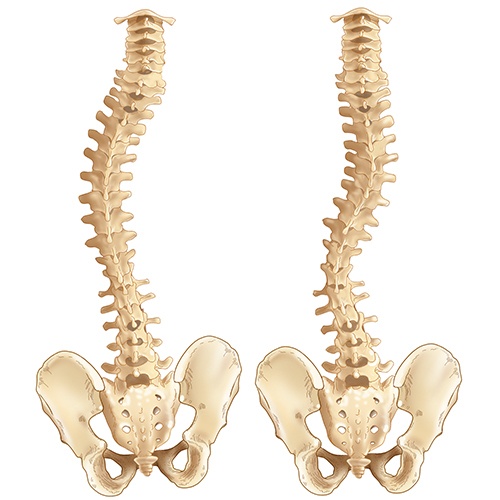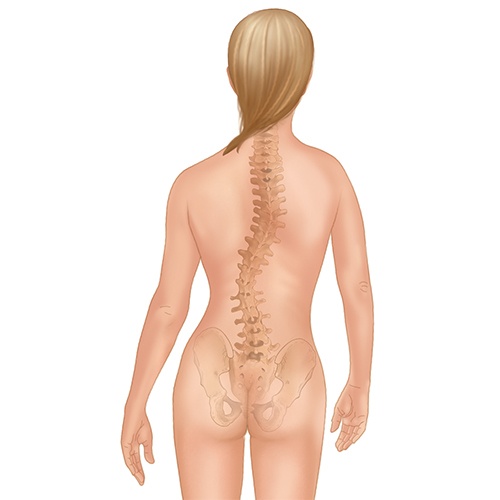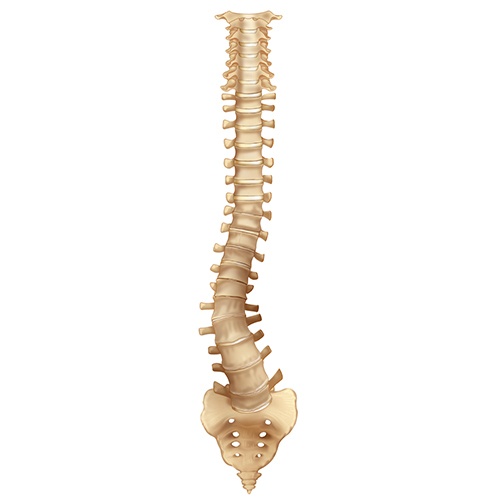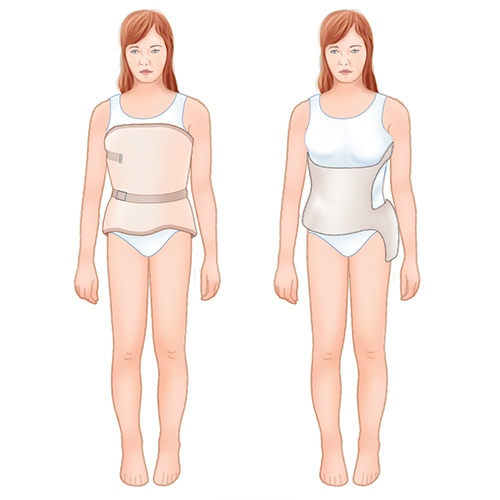Spinal Curvature

Understanding Scoliosis
Although scoliosis can occur at any age, it most frequently develops in children. Scoliosis occurring in patients 10-18 years old is called Adolescent Idiopathic Scoliosis. The term “idiopathic” means the cause is unknown.
Scoliosis that occurs or is diagnosed in adulthood is a different condition, because the causes and treatment goals are different.
When the spine is viewed from the back, patients with scoliosis have a spinal curvature that looks like a “C” (one curve) or an “S” (two curves) when viewed on an x-ray.
Adolescent Idiopathic Scoliosis (AIS)

For many patients with AIS, it is a painless condition. However, there are several signs that a healthcare professional uses to help determine if a patient has scoliosis.
The most common signs of scoliosis include:
- Uneven shoulders and/or shoulder blades
- Uneven hips and waist
- Appearance of leaning
- Head is not centered over the body
- A “rib hump”, which is a hump on one side of the spine that is most noticeable when bending forward
Scoliosis in Adults
There are many different types of scoliosis in adults. The most common types are shown below.
Adolescent Scoliosis of the Adult (ASA)
ASA is scoliosis that was present during adolescence and then worsened during adulthood. The cause of this type of scoliosis is often unknown.


De Novo Scoliosis
DeNovo Scoliosis is a type of scoliosis that began in adulthood due to degenerative changes in the spine, causing a deformity to develop.
Unlike adolescents with scoliosis who rarely complain of pain, adult patients with scoliosis may have a variety of symptoms including:
- Low back pain and stiffness
- Numbness, weakness, and cramping due to pinched spinal nerves. These symptoms are caused by degeneration of the discs and joints leading to narrowing of openings in the spine (spinal stenosis).
- Loss of sagittal balance which causes the patient to compensate by bending their hips and knees to maintain balance, which can cause muscle fatigue.
Diagnosing Scoliosis
Scoliosis may be identified by a healthcare professional through a complete history followed by a thorough physical examination in which they will examine the spine and look for any signs of scoliosis.
X-rays may be taken in order to evaluate any tilt or rotation of the vertebrae causing a curvature. X-rays allow the healthcare professional to confirm the diagnosis, monitor the degree and severity of the curve, and to assess the patient’s skeletal maturity.
Treating Scoliosis
The treatment of scoliosis must take into account the severity and location of the curve and the age and state of physical maturity of the patient. Treatment options range from observation, bracing and casting to surgery.
In most cases of adult scoliosis, non-operative treatment is preferred. This can include periodic observation, over-the-counter pain relievers and exercise.
Bracing
Bracing is appropriate for moderate size curves in growing children to prevent further progression of the curve while growth of the spine remains. The goal of bracing is to prevent further progression since the brace cannot correct a scoliotic curve.

Surgical Treatment
Surgical treatment is reserved for moderate to severe curves. The goals of surgical treatment are to correct the curve and prevent progression.
Disclaimer:
The material on this website is intended to be an educational resource only and is not meant to be a warranty or to replace a conversation between a patient and their physician or member of their health care team. Please consult a physician for a complete list of indications, contraindications, precautions, warnings, clinical results and other important medical information that pertains to this procedure. The decision to receive medical treatment is individualized to the patient and the patient’s symptoms. The information presented on this site may not apply to your condition, treatment or its outcome, as surgical techniques vary and complications can occur. It is important to discuss the viability of any surgical procedure with a physician to decide the right treatment option.
